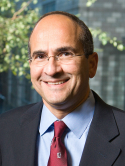Free flap reexploration: Indications, treatment, and outcomes in 1193 free flaps Journal Article
| Authors: | Bui, D. T.; Cordeiro, P. G.; Hu, Q. Y.; Disa, J. J.; Pusic, A.; Mehrara, B. J. |
| Article Title: | Free flap reexploration: Indications, treatment, and outcomes in 1193 free flaps |
| Abstract: | BACKGROUND: Microvascular free tissue transfer is a reliable method for reconstruction of complex surgical defects. However, there is still a small risk of flap compromise necessitating urgent reexploration. A comprehensive study examining the causes and methods of avoiding or treating these complications has not been performed. The purpose of this study was to review the authors' experience with a large number of microvascular complications over an 11-year period. METHODS: This was a retrospective review of all free flaps performed from 1991 to 2002 at Memorial Sloan-Kettering Cancer Center. All patients who required emergent reexploration were identified, and the incidence of vascular complications and methods used for their management were analyzed. RESULTS: A total of 1193 free flaps were performed during the study period, of which 6 percent required emergent reexploration. The most common causes for reexploration were pedicle thrombosis (53 percent) and hematoma/bleeding (30 percent). The overall flap survival rate was 98.8 percent. Venous thrombosis was more common than arterial thrombosis (74 versus 26 percent) and had a higher salvage rate (71 versus 40 percent). Salvaged free flaps were reexplored more quickly than failed flaps (4 versus 9 hours after detection; p = 0.01). There was no significant difference in salvage rate in flaps requiring secondary vein grafting or thrombolysis as compared with those with anastomotic revision only. CONCLUSIONS: Microvascular free tissue transfer is a reliable reconstructive technique with low failure rates. Careful monitoring and urgent reexploration are critical for salvage of compromised flaps. The majority of venous thromboses can be salvaged. Arterial thromboses can be more problematic. An algorithm for flap exploration and salvage is presented. ©2007American Society of Plastic Surgeons. |
| Keywords: | adolescent; adult; child; controlled study; treatment outcome; aged; aged, 80 and over; middle aged; survival rate; treatment failure; reconstructive surgical procedures; retrospective studies; major clinical study; plastic surgery; salvage therapy; surgical flaps; outcome assessment; treatment indication; incidence; patient monitoring; microsurgery; retrospective study; algorithms; postoperative complication; postoperative complications; algorithm; vein thrombosis; thrombosis; reoperation; heparin; reliability; graft survival; postoperative hemorrhage; free tissue graft; hematoma; pedicled skin flap; tissue plasminogen activator; streptokinase; fibrinolytic therapy; thrombectomy; postoperative thrombosis; microangiopathy; vein graft |
| Journal Title: | Plastic and Reconstructive Surgery |
| Volume: | 119 |
| Issue: | 7 |
| ISSN: | 0032-1052 |
| Publisher: | Lippincott Williams & Wilkins |
| Date Published: | 2007-06-01 |
| Start Page: | 2092 |
| End Page: | 2100 |
| Language: | English |
| DOI: | 10.1097/01.prs.0000260598.24376.e1 |
| PUBMED: | 17519706 |
| PROVIDER: | scopus |
| DOI/URL: | |
| Notes: | --- - "Cited By (since 1996): 79" - "Export Date: 17 November 2011" - "CODEN: PRSUA" - "Source: Scopus" |
Altmetric
Citation Impact
BMJ Impact Analytics
Related MSK Work







